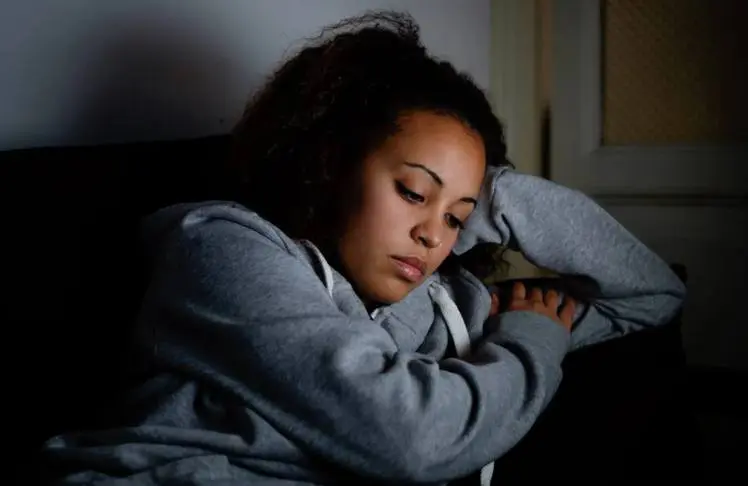
Editor’s note: This article contains research highlighting the rise in suicide rates among Black women and girls. If you’re feeling suicidal or concerned that someone you know may be in danger of hurting themself, call or text the National Suicide Prevention Lifeline at 988. The lifeline is available 24 hours a day, seven days a week, and is staffed by trained counselors.
At the same time that demand for free or low-cost mental health resources is surging, recent research has identified a troubling trend: the rise in suicide rates among Black women and girls.
Indeed, that’s the sobering finding of a recent study from Columbia University’s Mailman School of Public Health. Published in the American Journal of Psychiatry last month, the study highlights a stark increase over the past two decades — and its findings are a call to action to pay attention to the nuanced ways racism, sexism, and cyberbullying take a toll on Black women.
The researchers analyzed data from the National Center for Health Statistics’ Multiple Cause of Death database. They examined 9,271 suicide deaths by year of mortality, race, sex, age, and U.S. census region.
For ages 15 to 84, suicide rates overall rose from two deaths per 100,000 in 1999 to 3.4 per 100,000 in 2020. One of the highest spikes occurred among Black women and girls ages 15 to 24, whose rates rose from 1.9 to 4.9 deaths per 100,000 in the same 21-year time span.
Katherine Keyes, a senior author and professor of epidemiology at Columbia Mailman School, said in a statement her team’s findings support preexisting research on rising suicidal behavior among minority youth.
“While the reasons why remain under investigation, it could be that cyberbullying and online racial attacks toward Black female youth may be on the rise, in particular, and therefore interventions targeting certain stressors are particularly critical for young Black women,” Keyes said.
Cyberbullying and Suicide in Black Teen Girls
Over the past few years, the world watched Megan Thee Stallion get ruthlessly attacked online — and Megan subsequently acknowledged she had suicidal thoughts. But brutal online harassment doesn’t wait until a woman is in her twenties.
While nearly half of teens in the United States experience cyberbullying, older teen girls, ages 15 to 17, are most likely to encounter two or more forms of online harassment, a 2022 survey by the Pew Research Center found.
Similar to in-person bullying, cyberbullying increases the risk of thoughts of suicide and attempts.
The online harassment playbook is diverse: name-calling that cuts to the bone, false rumors that spread like wildfire, being texted or directly messaged unasked-for explicit images, having explicit images of them shared without their consent, constantly being asked about their whereabouts by someone who isn’t their parent, and physical threats.
Black teens who participated in Pew’s survey were five times more likely than white teens and about two times more likely than Hispanic teens to say their race or ethnicity made them a target for cyberbullying. Black teens were also least likely to report online abuse.
Those findings seem to confirm the results of a study published in June 2022 in the journal JAMA Network Open. That study found that female and Black youth are more likely than other races and genders to be victims of cyberbullying.
Ran Barzilay, a psychiatrist at the Children’s Hospital of Philadelphia who led the research, suggested primary care providers “screen for cyberbullying routinely in the same way that they might screen for other suicide risk factors like depression.”
Regional Suicide Rates Among Black Women
One finding from the Columbia study published last month is that the rates of suicide among Black women and girls vary, depending on where they live.
Regionally, suicide rates for Black women were highest in the West at five deaths per 100,000 among those ages 25 to 34. Many deaths were also concentrated in the South due to the large Black population in that region.
However, regardless of place, the researchers said racial and gender-based discrimination and violence are likely contributors to rates of suicide among Black women.
Victoria Joseph, a study author and epidemiology analyst at Columbia Mailman School, said, “intimate partner violence, neighborhood violence, and lack of investment into federal and state support systems also contribute to poor mental health outcomes and limited treatment access.”
Keyes said more research is needed to get to the root causes affecting Black women and girls and help end this crisis.
“We encourage future research to fine-tune deeper delineations that take into account and consider state-level trends and analyses among various ethnicities and gender identities,” she said.















